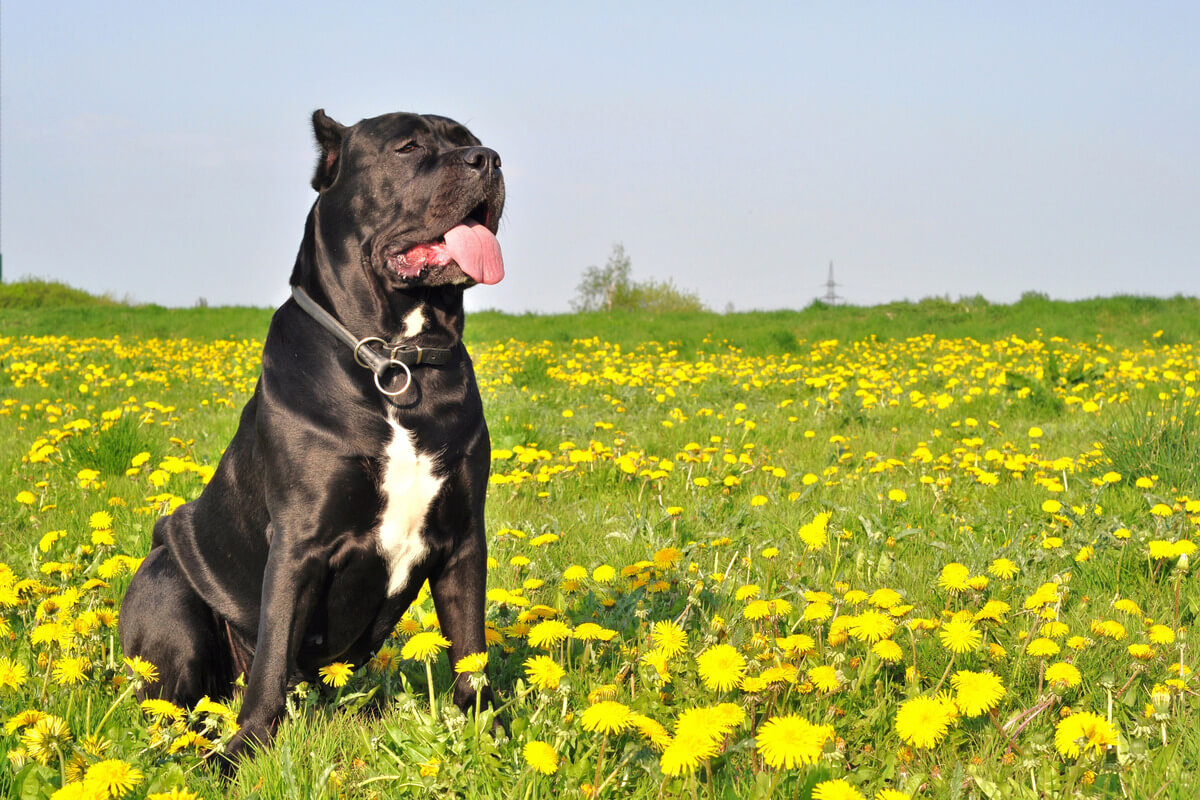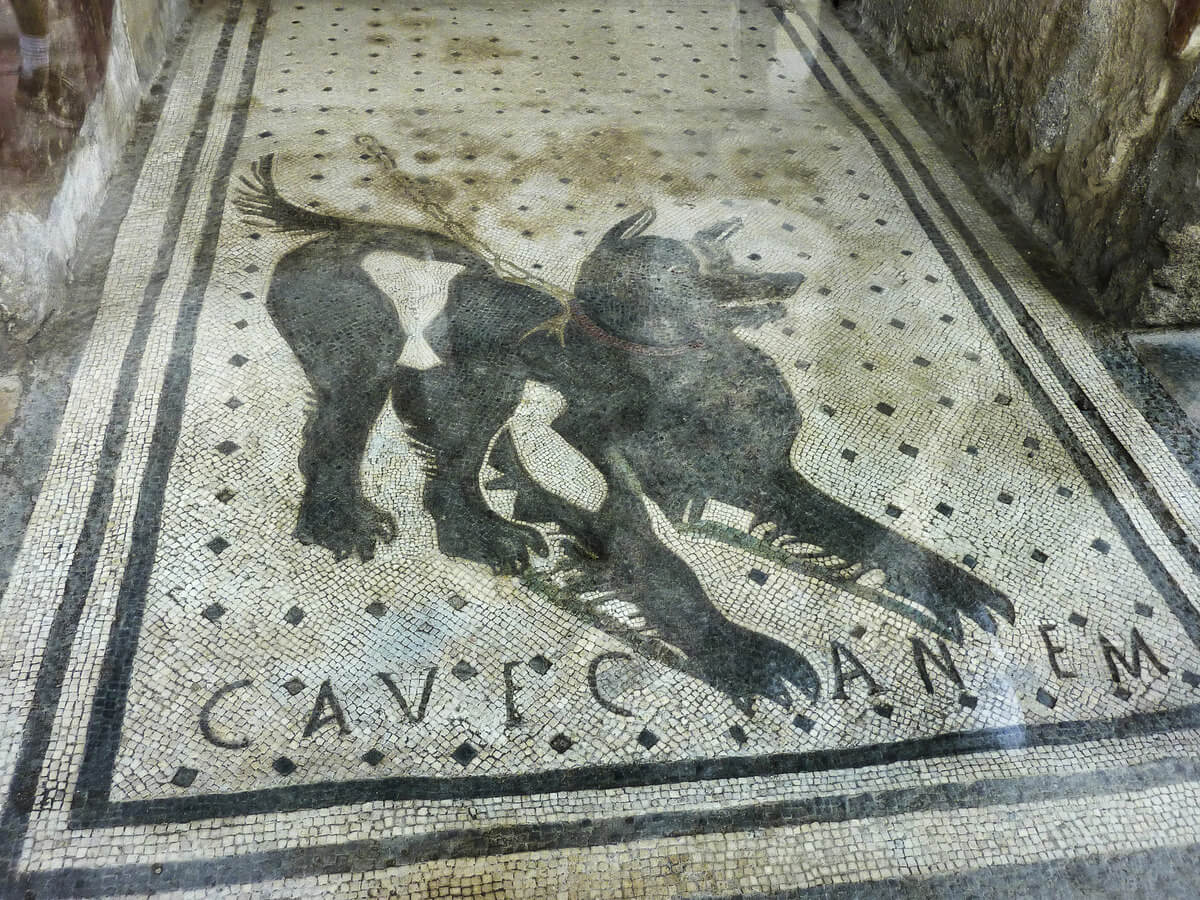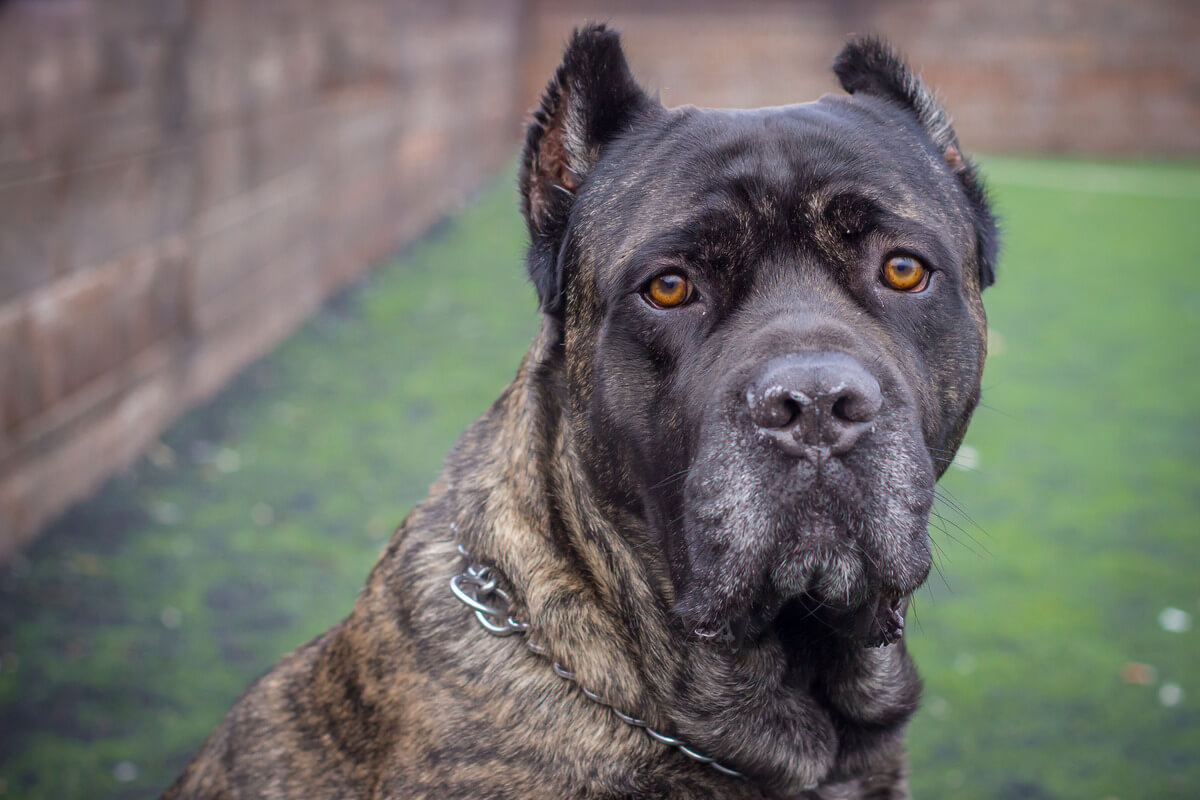Introduction
The Cane Corso, sometimes referred to as “Cane Corso Italiano,” is one of the most admired and formidable dog breeds in the world. Its imposing presence, keen intelligence, and deep loyalty to its owner are hallmarks of the breed. It is often cited as a direct descendant of the ancient Roman war dogs known as the “Canis Pugnax,” meaning “fighting dog.” These large, mastiff-type canines not only served as powerful guardians but also accompanied Roman legions on campaigns throughout the empire.
Over the centuries, these dogs were selectively bred for various tasks - ranging from big-game hunting to farm protection - ultimately giving rise to the modern Cane Corso.

In fact, the Romans took such pride in their four-legged allies that they developed unique traditions for naming them. From evocative names reflecting a dog’s strength or temperament, to affectionate monikers highlighting their role as cherished companions, these labels can tell us much about the ancient Roman worldview. (To learn more about how Romans named their canine friends, and for a glimpse at some of the more popular choices, see our page on Roman dog names).
Though the concept of Cane Corso war dogs in ancient Rome can be a bit mythicized, there is enough anecdotal and historical evidence to suggest that a breed sharing many traits with today’s Cane Corso existed and was employed by the Romans.
The Ancestry of Roman Mastiffs
The Molosser Connection
When examining the ancient roots of the Cane Corso, one must look to Molossers. The term “Molosser” broadly describes a group of solidly built, large dog breeds that share a common progenitor. The name itself is derived from the Molossi people, who inhabited a region of Epirus (in modern-day northwestern Greece) during antiquity.
The Molossi were known for breeding large, muscular dogs used in hunting and warfare. These ancient canines spread throughout the Mediterranean basin via trade routes and military campaigns, interbreeding with local strains of large dogs in places like Italy, Spain, and Asia Minor.
The “Canis Pugnax”
Among the dogs that resulted from the Molossian lineage were the so-called “Canis Pugnax.” This Latin phrase literally translates to “fighting dog.” According to many historians and canine experts, “Canis Pugnax” is often used as a blanket term to describe the Roman legion’s mastiff-type war dogs. However, Roman usage of such dogs was multifaceted: they were not solely for combat in the arenas or in warfare, but also for guard duties, tracking, and hunting large game.
Over time, these dogs evolved, giving rise to several subtypes, some of which are believed to be direct precursors to modern mastiffs - particularly those found in Italy (like the Mastino Napoletano) and the Cane Corso.
Physical Attributes and Early Mentions
While specific descriptions of the ancient “Canis Pugnax” are scarce, accounts from writers such as Marcus Terentius Varro and Columella (both of whom wrote on agriculture and animal husbandry) allude to large, powerful dogs in the Roman countryside, used to guard livestock against predators and thieves. This function required a breed that was not only capable of fierce aggression toward threats, but also calm and controlled enough to coexist with human families and farm animals.
Though we do not have precise measurements from ancient texts, artistic representations and skeletal remains suggest a dog that stood anywhere from 22 to 27 inches at the shoulder (or possibly taller) and could weigh upwards of 100 pounds. The short coat, brachycephalic (although not extremely so) muzzle, and robust musculature are traits we still see in the Cane Corso today.
The Role of the Cane Corso in Ancient Warfare
Roman Military Use of Dogs
Throughout history, numerous civilizations - from the Egyptians to the Greeks - employed dogs in warfare. The Romans were no exception. As Rome’s domain expanded across Europe, Northern Africa, and Asia Minor, so did their reliance on war dogs for patrolling, guarding, and psychological warfare. The presence of a large, fearless dog at the front lines could not be underestimated: it could intimidate enemy armies, disrupt enemy cavalry, and help protect Roman encampments.
Within the Roman legions, dogs were often assigned to specific handlers. These handlers were responsible for the dogs’ welfare, training, and readiness. In many ancient mosaics and friezes, dogs can be seen in procession with the legions or in hunting scenes that symbolized Roman might. While it’s difficult to confirm the exact breed, the morphological traits of the dogs depicted - thick necks, broad chests and large heads - bear resemblance to the progenitors of modern mastiffs, including the Cane Corso.
Armor and Equipment
One fascinating aspect of ancient Roman war dogs is the claim that some of them wore a type of protective armor. Evidence for this includes artistic depictions and references in historical records describing dogs outfitted with spiked collars and sometimes leather or metal-plated harnesses. The armor would serve both to protect the dog from slashing attacks, and to turn the dog itself into a formidable weapon.
Of course, not all Roman canines wore such equipment; practical considerations, including cost and available resources, often dictated the supply of armor. That said, the concept of a heavily armored mastiff leading an infantry charge or guarding the perimeter of a camp was a potent symbol of Roman power.
Deployment Tactics
While large dogs like the Cane Corso’s ancestors excelled in intimidation, their tactical use on the battlefield could be varied. In some instances, they may have been unleashed to break enemy lines or cause panic among enemy horses, which, often unaccustomed to the sight and smell of large dogs, could be thrown into chaos, leading to cavalry breakdowns.
In siege situations, dogs could act as sentries, sniffing out or alerting of approaching enemies long before the human guards noticed.
It’s also likely that these war dogs played a key role in foraging and hunting. Armies on the move needed a steady supply of food, and large, powerful dogs provided an advantage in bringing down wild game. This combination of combat utility, protective functions, and resource acquisition highlights just how indispensable dogs could be for the ancient Roman military.
Farm Protection
Beyond the battlefield and the hunt, Cane Corso-type dogs in ancient Rome took on more domestic roles. The same imposing presence and protective instincts that made them powerful in war proved equally valuable when guarding livestock and property. In agrarian regions, these canines were employed to patrol fields and estates against both thieves and predators.
Given that the Roman economy heavily depended on agriculture, effective farm dogs were of paramount importance. Those that descended from war dogs were particularly prized, as their lineage carried traits of courage, perseverance, and loyalty; qualities vital to safeguarding livestock from wolves or human raiders. Their large heads and muscular jaws enabled them to keep predators at bay, while their intelligence let them adapt to the daily rhythms of farm life.
The Cultural Significance of War Dogs in Ancient Rome
Symbol of Power and Status
Roman society was deeply stratified. Elites often sought ways to project power and prestige, not only through lavish architecture but also through the animals they owned. Large war dogs, particularly those with a proven lineage or from famous breeding lines, became status symbols. These dogs sometimes appeared in frescoes and mosaics in the homes of wealthy patricians, symbolizing the family’s wealth and martial vigor.

The floor mosaic in 'The House of the Tragic Poet' in Pompeii of a growling dog, featuring the Latin words 'cave canem' (beware of the dog).
Furthermore, as already mentioned earlier, dogs frequently received mention in Roman literature and poetry, occasionally linked to virtues such as loyalty (fides), guardianship, and courage (virtus). The presence of a fierce guardian in one’s villa or estate was an assertion of influence, reflecting not just the power of Rome itself, but also the personal might of the individual owner.
Religious and Mythological Contexts
Dogs in ancient Rome were not only significant in a martial context, but also held religious and mythological symbolism. In Roman religion, dogs were sometimes associated with gods and goddesses of the hunt, such as Diana, or with chthonic deities linked to the underworld.
Cerberus, the three-headed dog guarding the entrance to the underworld in Greek and Roman mythology, epitomized the potent, fearsome qualities that Romans admired in large canines.
From Ancient Rome to the Modern Cane Corso
Survival Through Turbulent Centuries
As the Western Roman Empire declined in the 5th century AD, the social and economic structures that once supported widespread breeding of specialized war dogs fractured. Over time, barbarian invasions, depopulation of the countryside, and the shift of power to the Byzantine East altered the ways in which large Molossian dogs were bred and utilized.
However, in rural parts of Italy, farmers and landowners continued to rely on mastiff-type dogs for protection against bandits, predators and rival factions. These dogs, collectively known in some records as “cane da corso” (which can be loosely translated as “dog of the courtyard” or “dog of the farmstead”), managed to survive.
Because these canines were integral to rural life - providing security and helping with tasks like hunting and even driving cattle - they remained a fixture in the Italian countryside, albeit in reduced numbers.
Renaissance to the 20th Century
During the Renaissance period, there was renewed interest in classical antiquity, including art, literature, and some aspects of animal husbandry. However, the Cane Corso remained primarily a working dog, found more frequently in the fields than in the courts or fancy kennels of the nobility.
By the time Italy entered the modern era, industrialization and urbanization began to shift the population away from agriculture. Consequently, the need for large estate-guarding dogs declined. This trend severely impacted the Cane Corso’s numbers, driving the breed close to extinction by the mid-20th century. Had it not been for a handful of dedicated enthusiasts, particularly in southern Italy (in regions like Puglia, Basilicata, and Campania), the Cane Corso might have vanished entirely.
Resurgence and Recognition
The late 20th century saw a revitalization of interest in the Cane Corso as a breed. Canine enthusiasts both within Italy and abroad sought to document and standardize the remaining population, working toward formal recognition by major kennel clubs.
In 1994, the Cane Corso was recognized by the ENCI (Ente Nazionale della Cinofilia Italiana), and in 2007, the Fédération Cynologique Internationale (FCI) acknowledged it. The American Kennel Club (AKC) later fully recognized the breed in 2010.
This official acceptance helped establish uniform breeding standards and preserve a breed that many believed was the closest living embodiment of the ancient Canis Pugnax. Modern Cane Corsos, while still large, athletic and protective, have been selectively bred for stable temperaments to fit into family life. The breed is celebrated for its strong bonds with its human family, high trainability and versatile nature.
Though modern Cane Corsos are far removed from the brutalities of the ancient Roman battlefield, the breed still retains a strong protective instinct and an innate desire to guard its family and territory. Because of these traits, responsible ownership is critical. Early socialization and consistent, positive training methods are essential to channel the dog’s natural protective instincts into appropriate behavior.

A well-trained, well-socialized Cane Corso is typically confident, calm, and even affectionate with familiar people. They can be patient with children, though supervision is always advised given the dog’s size and strength. Strangers may be met with wariness until the dog determines there is no threat; this vigilance is part of the breed’s historical function.
Working Roles in the Modern World
Today’s Cane Corso excels in a variety of tasks, from competitive dog sports (e.g., obedience, agility, and protection trials) to serving as therapy or service dogs. Their intelligence, loyalty, and desire to please make them trainable, even if they sometimes exhibit a degree of stubborn independence - a trait that harks back to their days as self-reliant farm dogs. Their protective instincts and imposing stature also make them capable guard or watchdogs when properly trained.
Despite these working qualities, many Cane Corsos are cherished simply as family pets. Provided they receive adequate exercise, mental stimulation and consistent leadership, they can thrive in a home environment. However, potential owners must remain mindful of the breed’s large size, exercise needs, and the importance of early and ongoing training.
Dispelling Myths and Romanticizing the Past
Myth vs. Reality
In reality, war dogs were but one element of Rome’s vast military machine, and their role, while significant, should not be overstated. Ancient sources do not consistently delineate one singular “Cane Corso war dog” but rather describe large Molossian or “Canis Pugnax” dogs in various capacities.
Additionally, many modern representations rely heavily on artistic and literary interpretations, which can be shaped by symbolism rather than factual record. Frescoes, statues, or passages that depict powerful dogs might serve allegorical purposes, emphasizing Roman dominion over nature and enemies alike. Nonetheless, these visuals and narratives do underscore the Roman respect for large, capable canines.



